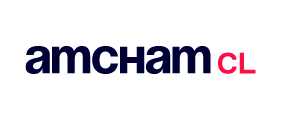
“We must recognize that it has cost us to realize that it was too easy to fall into bad practices, however, today it is time for companies to become aware that it is essential to have controls to prevent these crimes from occurring, especially in complex companies with many workers”.
Despite having been a record year in uncovering cases of malpractice, during 2015 the certification of crime prevention models was not promoted, especially in large business groups in Chile.
Last year was an atypical year for the country, as far as ‘uncovering’ malpractices is concerned. We learned about all kinds of cases of bad practices, including corruption, collusion, money laundering, etc., and this year has not started very differently. This has shown an imperative lack of control and regrettable overconfidence on the part of Chileans.
It is important to remember that if the intention is to avoid these bad practices, we must start at home. Since 2009 Chile has had the so-called Law on Criminal Liability of Legal Entities, which should act as an incentive to prevent companies from committing these types of crimes. This law, which was passed in Chile as one of the requirements to enter the OECD, states that companies are responsible for offenses committed by their employees. However, after last year’s scandals, we will likely end up migrating to a model more similar to the Spanish one, which includes a broader list of offenses where the responsibility can be escalated to the company.
This law stipulates that the company is guilty if it does not do everything possible to prevent these offenses from occurring. It is not a matter of putting hands on fire for all workers, but of having adequate controls so that these types of offenses do not occur. To be able to demonstrate this at the moment a crime occurs and avoid sanctions ranging from fines to the dissolution of the company, the law establishes that these models can be certified by a third-party registered with the Superintendency of Securities and Insurance (SVS). Otherwise, all companies could claim that they already had a model at the time the code violation was discovered.
The worrying thing is that according to the latest SVS report as of March 2016, only 139 business groups are certified. This figure is low if we consider that there are more than 1900 companies that are in the ‘Large 4’ category, i.e., that sell more than one million UF, according to classification by the Internal Revenue Service (SII).
This number has not changed much in the trend either if we consider that in 2014 there were 117 certified business groups (i.e. only 22 new companies were added to the list). The scenario is no better among IPSA firms; only 60% of these, according to the SVS, are certified.
Among the certified firms are groups such as Banco Estado, LAN, Arauco, Molymet, TVN, Anglo-American, Sigdo Koopers, BBVA, and Aguas Andinas, among others.
Faced with the hard data, we must recognize that it has been difficult to realize that it was too easy to fall into bad practices, however, today it is time for companies to become aware that it is essential to have controls to prevent these crimes from occurring, especially in complex companies with many workers, where sometimes it is the same incentives that end up leading workers to think only about ‘achieving the goal’, and not in ‘how they are doing it.
By Susana Sierra
Source: El Mostrador










